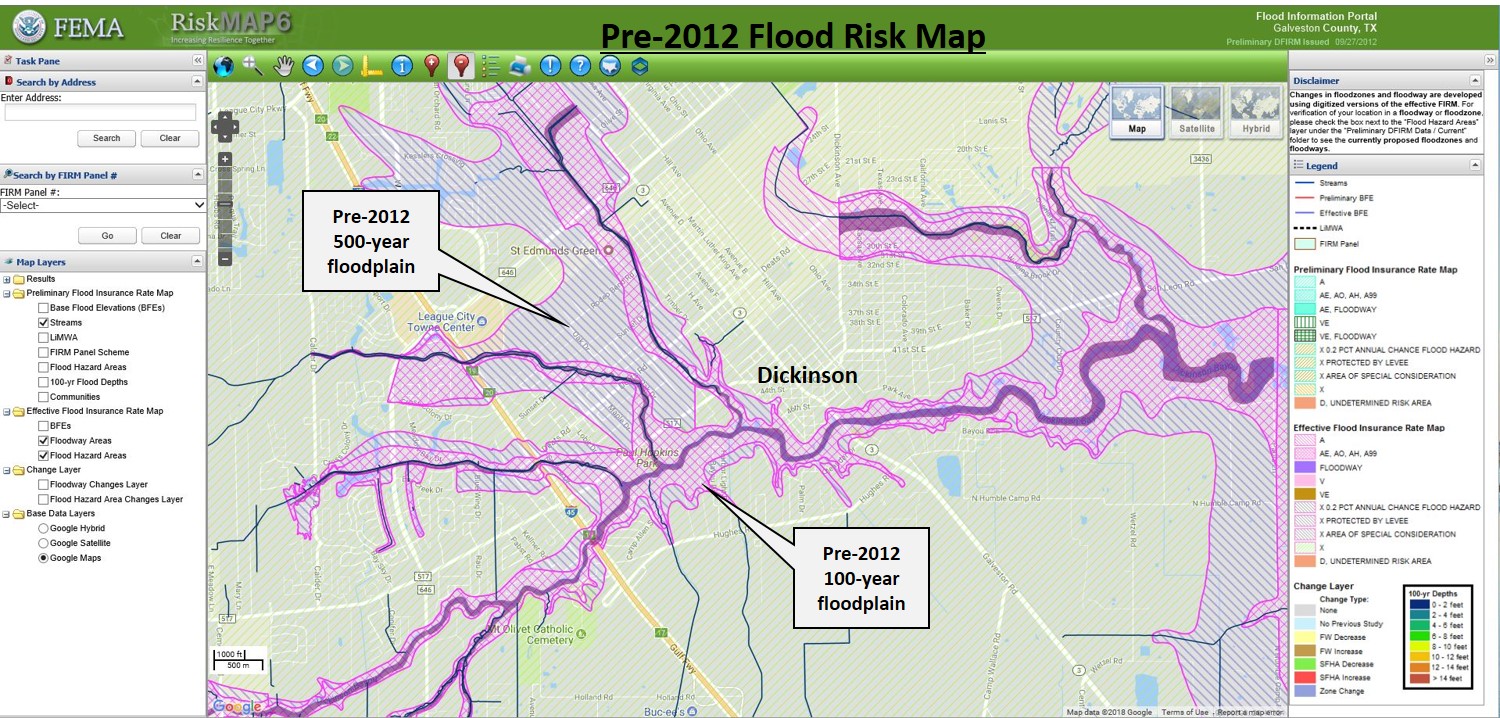Floodplain map vs. topography - Friendswood example
The summary of Harvey damage to properties provided by the City of Friendswood available for review on ArcGIS Online provides a rare opportunity for examination of actual flooding and assessment of the accuracy of the floodplain mapping.
The occurrence of significant damage outside of any floodplain can indicate that the maps are not accurate or other factors not accounted for in the FEMA methodology were in effect.
The floodplains included on the FEMA Flood Insurance Rate Maps (FIRM) are produced by modeling rainfall amount and intensity, drainage capacity and rate, and the topography. The topography is the primary factor governing the configuration of a mapped floodplain and it is not subject to variation based on input assumptions.
The Friendswood example shows that consideration of the detailed topography along with the floodplain maps can provide a better prediction of where flood damage is likely to occur than use of the FIRM alone.
Map #1 shows the portion of Friendswood near the intersections of Mary's, Cowart, and Chigger Creeks with Clear Creek. The 1% (100-yr) and 0.2% (500-yr) Annual Chance floodplains from the FIRMs are shown in light blue. Most of the Harvey damage to residential properties in Friendswood occurred in the area of this map.
Map #2 is the same as Map #1 except the damaged properties within floodplains have been removed to facilitate examination of the damaged properties outside of the floodplains.
The City of Friendswood reported that a total of 2243 homes within the city limits were damaged by Hurricane Harvey. There are 485 (22%) located outside of any mapped floodplain. Of these 485 there are 13 classified as Destroyed (>48" of flood water), mostly in the Forest Bend/Wedgewood Village area. Note also the concentration of damaged properties in the Katies Park area between Cowart and Chigger Creeks.
Map #3 shows the damaged properties outside of floodplains superimposed on the topographic map
derived from the Digital Elevation Models (DEM) available from the United States Geological Survey (USGS). The purple, plum, and blue-gray zones adjacent to the creeks are the lowest areas.
Except for the Orchard area on the northwest portion of the map virtually all of the damaged properties are located in these low areas. This suggests that the topography alone is a good predictor of where damage would be expected to occur in a severe rainfall event such as Harvey.
Map #4 shows the DEM again with the floodplains superimposed. Note that there is good agreement
between floodplains and topographic lows in most areas with some notable exceptions such as the Katies Park area mentioned above. A low area in Autumn Creek is also not included in the floodplains, however the high number of damaged properties in that subdivision (see Map #3) suggests a revision to the FIRM could be warranted.
There are also some relatively higher areas (for example north of Imperial Gardens) also mapped as floodplains. These areas may be more heavily influenced by the model inputs for rainfall and drainage than by topography. Map #1 shows many damaged homes in that floodplain area suggesting that the modeling was reliable.
Readers, are you familiar with the details of the topography for your area? If you experienced unexpected flooding during Harvey is your property located in a low area not included in the floodplain map?






Comments
Post a Comment